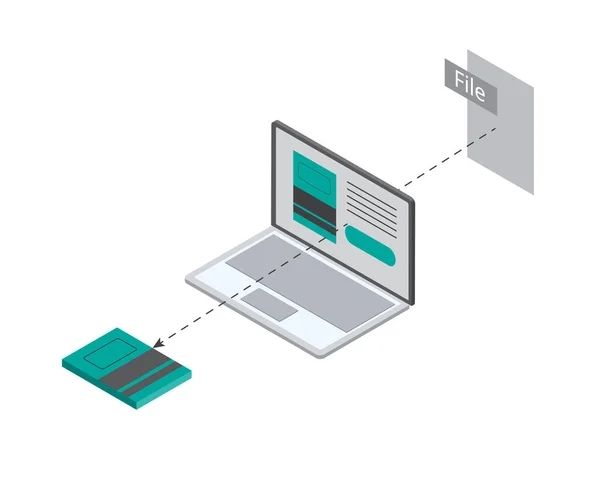As the publishing industry evolves, digital publishing and print-on-demand (POD) have emerged as innovative solutions for authors. These technologies offer numerous advantages, including cost-effectiveness, flexibility, and global reach of e-books.
This guide aims to inform you why you should consider e-books, PDFs, or POD by highlighting their benefits and explaining how they can revolutionize the publishing process.
What are the Advantages of making Ebooks?
Flexibility and Accessibility
Digital publishing offers unmatched flexibility. Authors can update content easily, release new editions swiftly, and cater to reader preferences with adjustable text sizes and screen readers. This adaptability makes e-books accessible to a broader audience, including those with visual impairments.
Read Next:
Cost-Effectiveness
Eliminating the need for physical production, digital publishing significantly reduces costs. Authors save on printing, storage, and distribution expenses, making it an economically viable option. Lower production costs also allow for competitive pricing, attracting more readers.
Instant Distribution
E-books can be distributed globally in an instant, providing immediate access to readers worldwide. This rapid dissemination breaks geographical barriers, allowing authors to reach an international audience without the logistical challenges of shipping physical books.
Environmental Benefits
Digital publishing is environmentally friendly. By reducing the demand for paper and eliminating the need for physical storage and transportation, e-books contribute to lower carbon emissions and help preserve natural resources.
The Benefits of Print-On-Demand (POD)
Print on Demand (POD) is a revolutionary printing process that enables books to be printed and bound as they are ordered, eliminating the need for large upfront investments in print runs and excess inventory.
With POD, books are produced on a per-order basis, ensuring that copies are printed only when there is demand, reducing waste and storage costs associated with traditional printing methods. This on-demand approach allows authors and publishers to maintain greater flexibility, control, and cost-effectiveness in the production and distribution of books, making it a popular choice for self-publishing and independent authors looking to bring their works to market efficiently and sustainably.
Benefits of Print on demand include;
Reduced Financial Risk
POD allows books to be printed only when an order is placed, eliminating the need for large upfront investments in inventory. This model reduces financial risk for authors and publishers, making it easier to manage production costs.
Increased Flexibility
POD offers unparalleled flexibility in the publishing process. Authors can easily update book files, experiment with different cover designs, and print limited editions without significant financial commitments. This adaptability is particularly beneficial for self-published authors.
Global Distribution
POD services provide extensive distribution networks, enabling authors to reach readers around the world. By partnering with platforms like Amazon KDP, IngramSpark, or Lulu, authors can ensure their books are available in major online bookstores and physical retailers.
Environmentally Friendly
POD minimizes waste by printing books only when there is demand. This approach reduces excess inventory and unsold copies, making it a more sustainable option compared to traditional print runs.
Why you should consider POD strategies in Self-publishing
Targeting a Tech-Savvy Audience
Authors should focus on the growing segment of tech-savvy readers who prefer digital formats for their convenience and accessibility. Highlighting the benefits of e-books, such as portability and instant access, can attract this demographic.
Leveraging Marketing Strategies
Effective marketing strategies can promote the advantages of e-books and POD. Utilizing social media, author websites, and email campaigns can raise awareness about the benefits of digital formats and drive sales.
Offering Bundled Options
To appeal to a wider audience, authors can offer bundled options, combining e-books with print-on-demand copies. This approach caters to both digital enthusiasts and traditional readers, maximizing reach and sales potential.
Success Stories and Case Studies
Independent Authors Thriving with E-books
Numerous independent authors have found success through digital publishing. For example, self-published authors on platforms like Xania have reached bestseller status, leveraging the cost-effectiveness and global reach of e-books as first-time authors.
Small Publishers Adopting POD
Small publishers are increasingly adopting POD to manage inventory efficiently and reduce financial risk. This model allows them to publish a diverse range of titles without the burden of large print runs and storage costs.
Conclusion
Digital publishing and print-on-demand represent the future of the publishing industry. Their cost-effectiveness, flexibility, and global reach make them ideal choices for modern authors. By embracing these technologies, authors can navigate the evolving landscape, reach a broader audience, and achieve their publishing goals sustainably. Whether you are a new author or an established writer looking to explore new opportunities, digital publishing and POD offer innovative solutions to thrive in the dynamic world of books.



